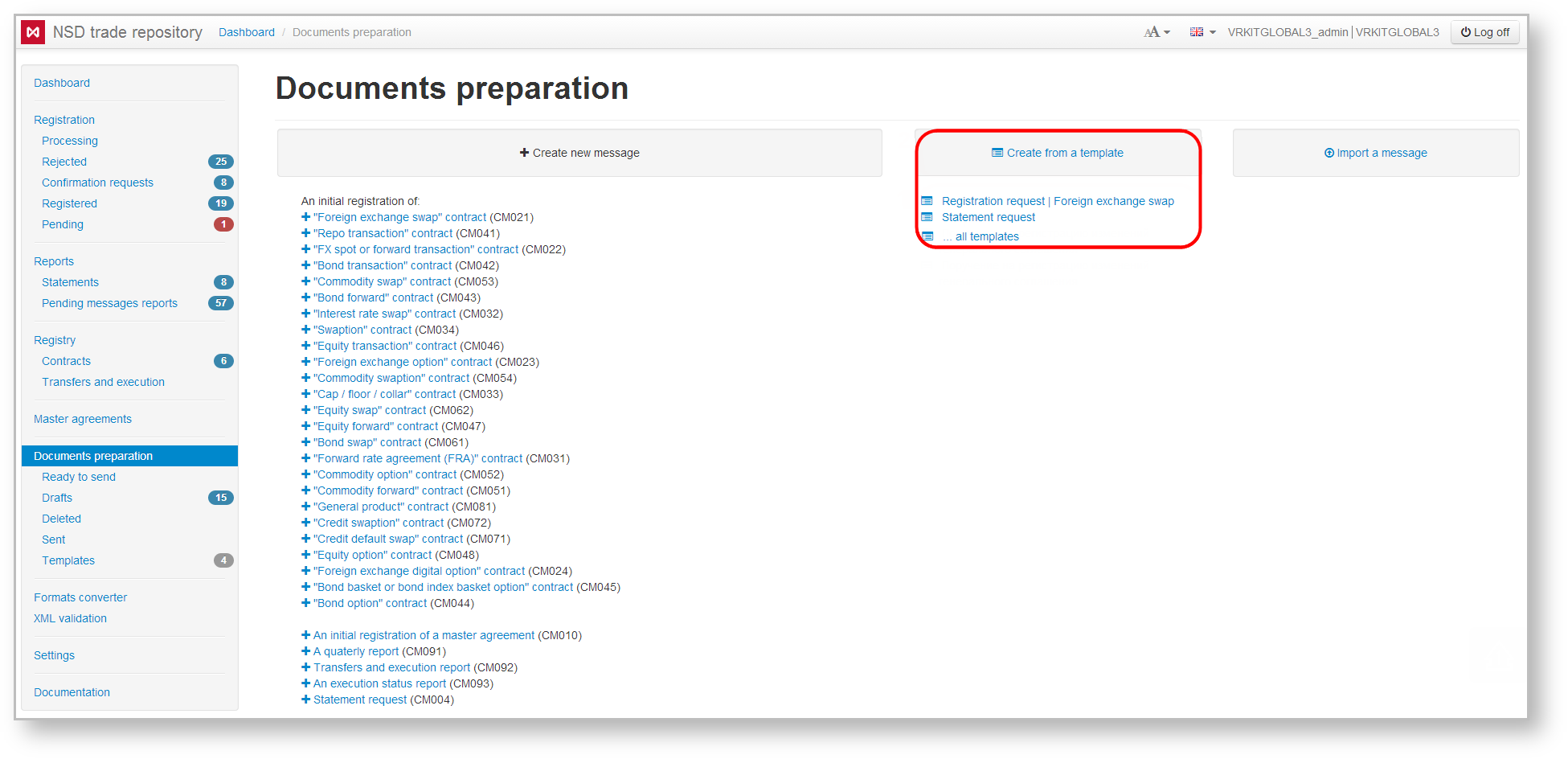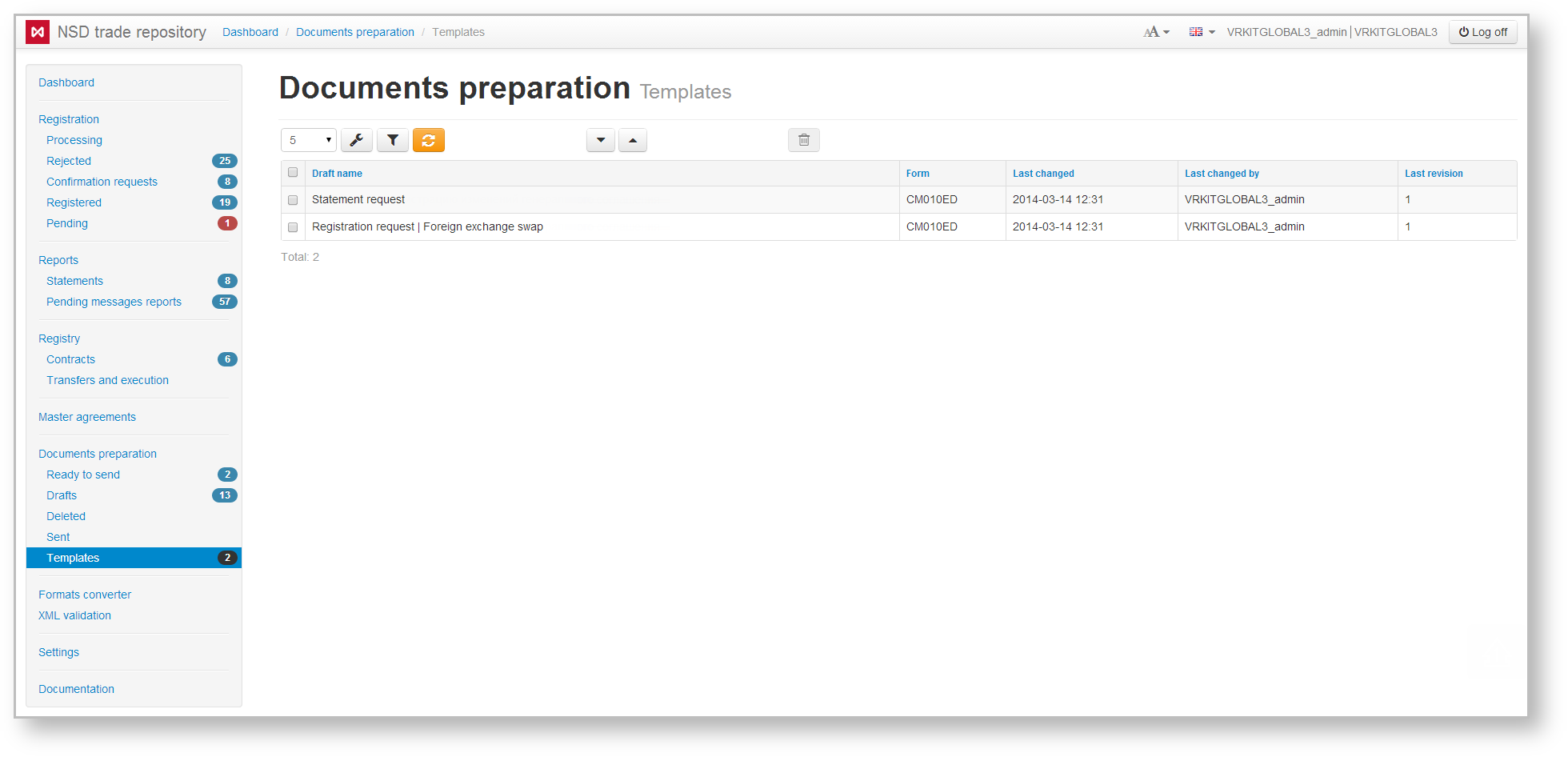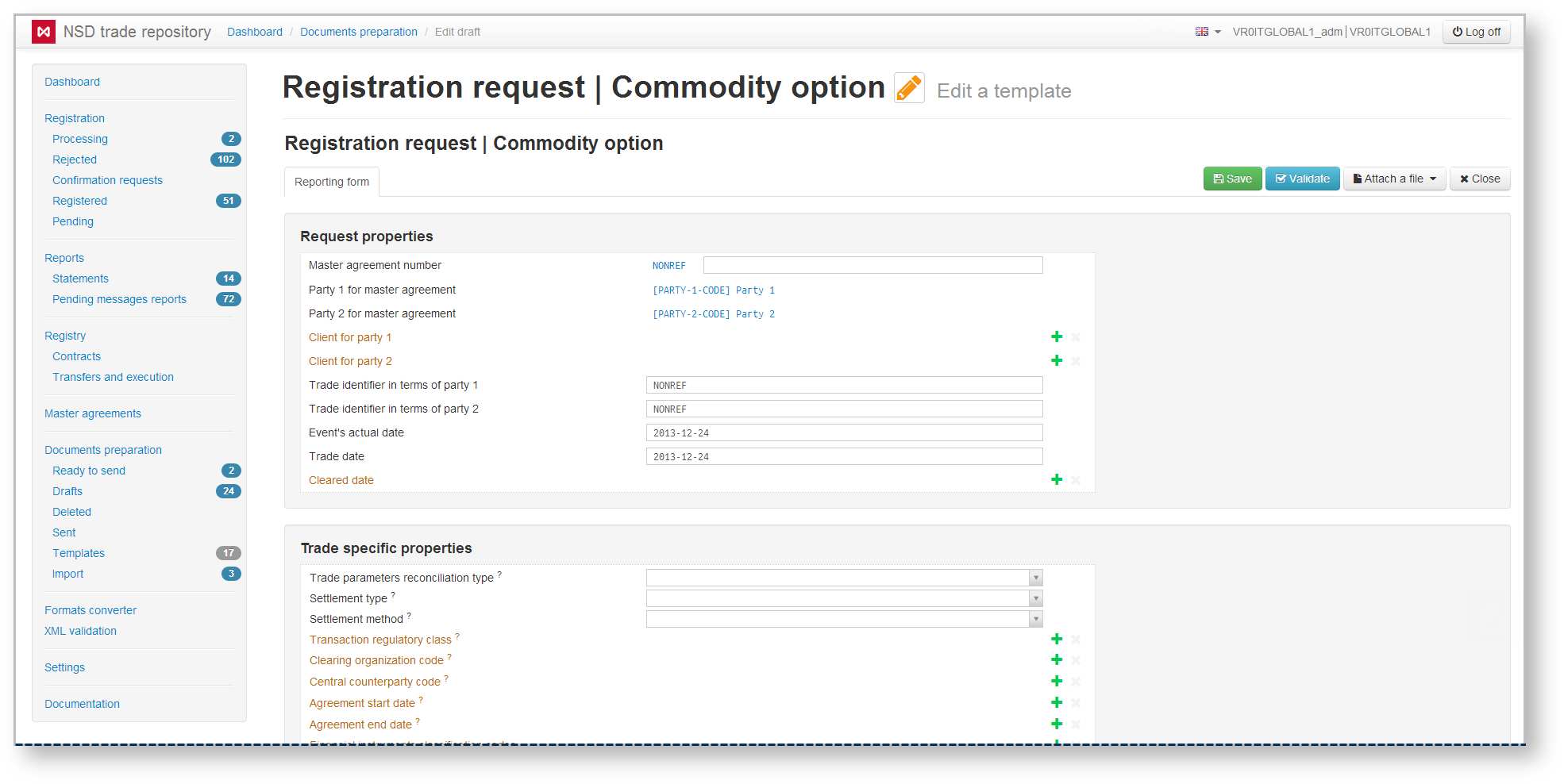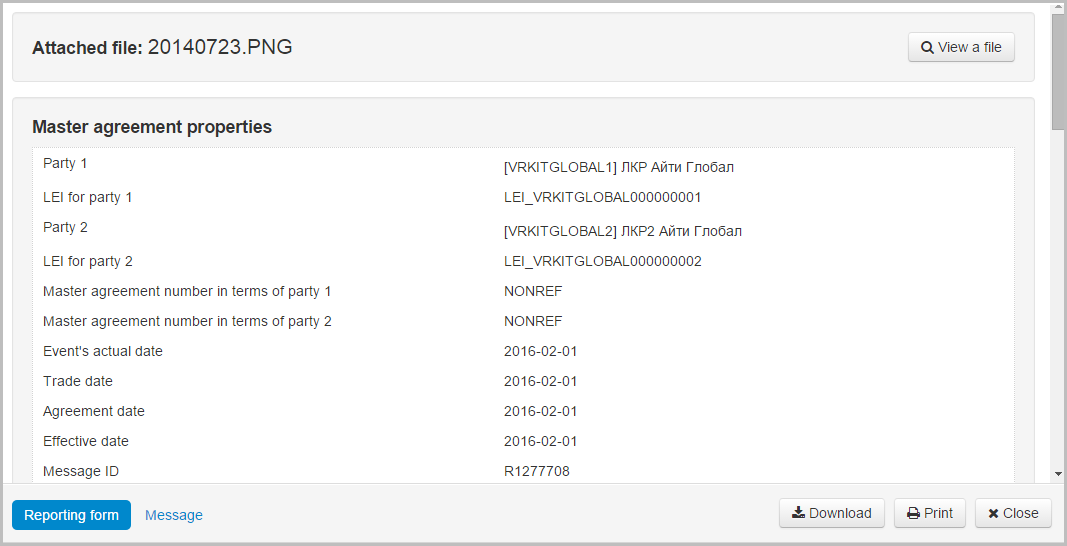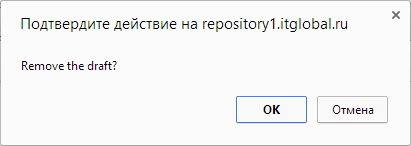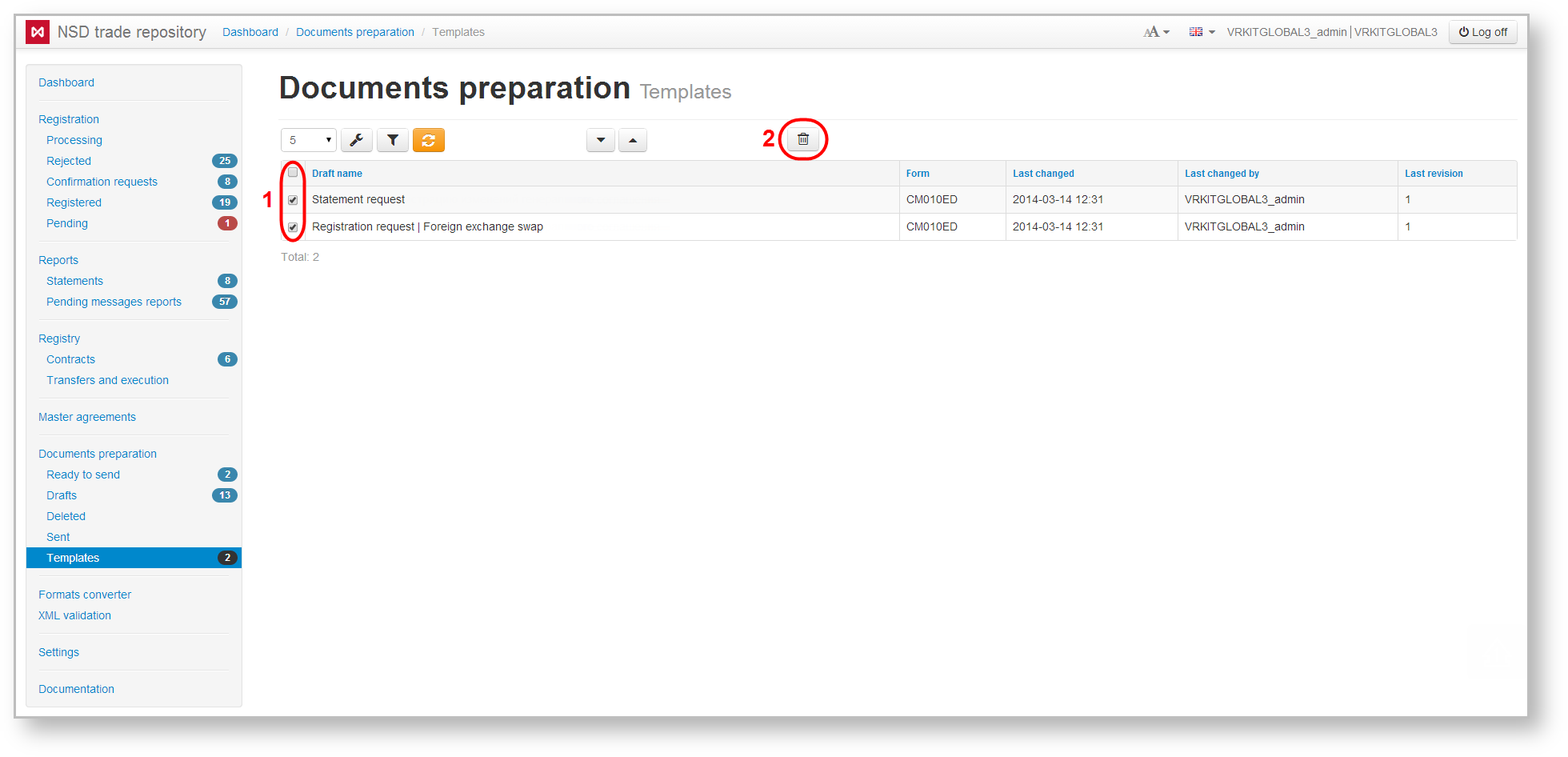The Web-client allows creating electronic documents with pre-filled data based on templates. Message templates are displayed in two forms: Preparation and Templates.
Fig. 1 – Preparation form Fig. 2 – Templates form
Templates can be created:
- in the Drafts form on the basis of any draft;
- in the To be sent form based on messages prepared to be sent to the repository;
- in the Sent form based on sent messages.
To create a template in the above forms click on the toolbar that appears when hovering the mouse over the table row. Clicking on the button will open a confirmation window (Fig. 3), where you must click OK. As a result, the sample pre-filled draft message will be saved in the Template form; this will also open the Edit template form (Fig. 4), designed to make changes to the template created. The contents and principles of the Edit template form are similar to those of the Create/edit message form.
Fig. 3 – Create template Fig. 4 – Edit template
Document templates cannot be sent to the repository. They serve as a basis for the new draft messages. The number of templates is unlimited.
The table can be filtered by:
- instrument types. The button indicates that the filtering will be applied only to the selected instruments. The button indicates that filtering will be applied to all instruments, except for the selected instruments;
- last change date;
- attachment;
- name – search by the draft name;
- parties (last changed by).
Clicking on the button opens a block of filters settings. After the settings has been specified, click the button to apply filtering. This will generate a table with drafts corresponding to the filter parameters (read more here).
Since templates are based on drafts, the contents and possibilities of working with the Templates and Drafts form documents are identical. Table 1 describes the available tools for working with templates.
Table 1 – Description of the toolbar buttons
| Button | Description | Calling form |
|---|---|---|
Pressing the button opens a window in which, if necessary, you can change the template name, and then click OK to save
| ||
Call preview form Clicking on the button opens the document preview form, where you can view and print the data | ||
Calling edit form The contents and principles of the Edit form are similar to those of the Create/edit message form | ||
Creating a draft based on the template Clicking the button will take the user to the Create/edit message form, where the user needs to make the necessary changes and save the document. As a result, the new message will be displayed in the Drafts form. | ||
| Keep the template in the xml file | ||
Deleting draft Clicking on the button will open a confirmation window, in which you must click OK to confirm the deletion. Deleted drafts are displayed in the Deleted form. | ||
To delete several templates you need to check the appropriate checkboxes next to the drafts name (Fig. 6.1). Then click the button on the toolbar to perform an operation (Fig. 6.2).
Fig. 6 – working with several templates
These tables are subject to information display settings, described in section General Settings.
